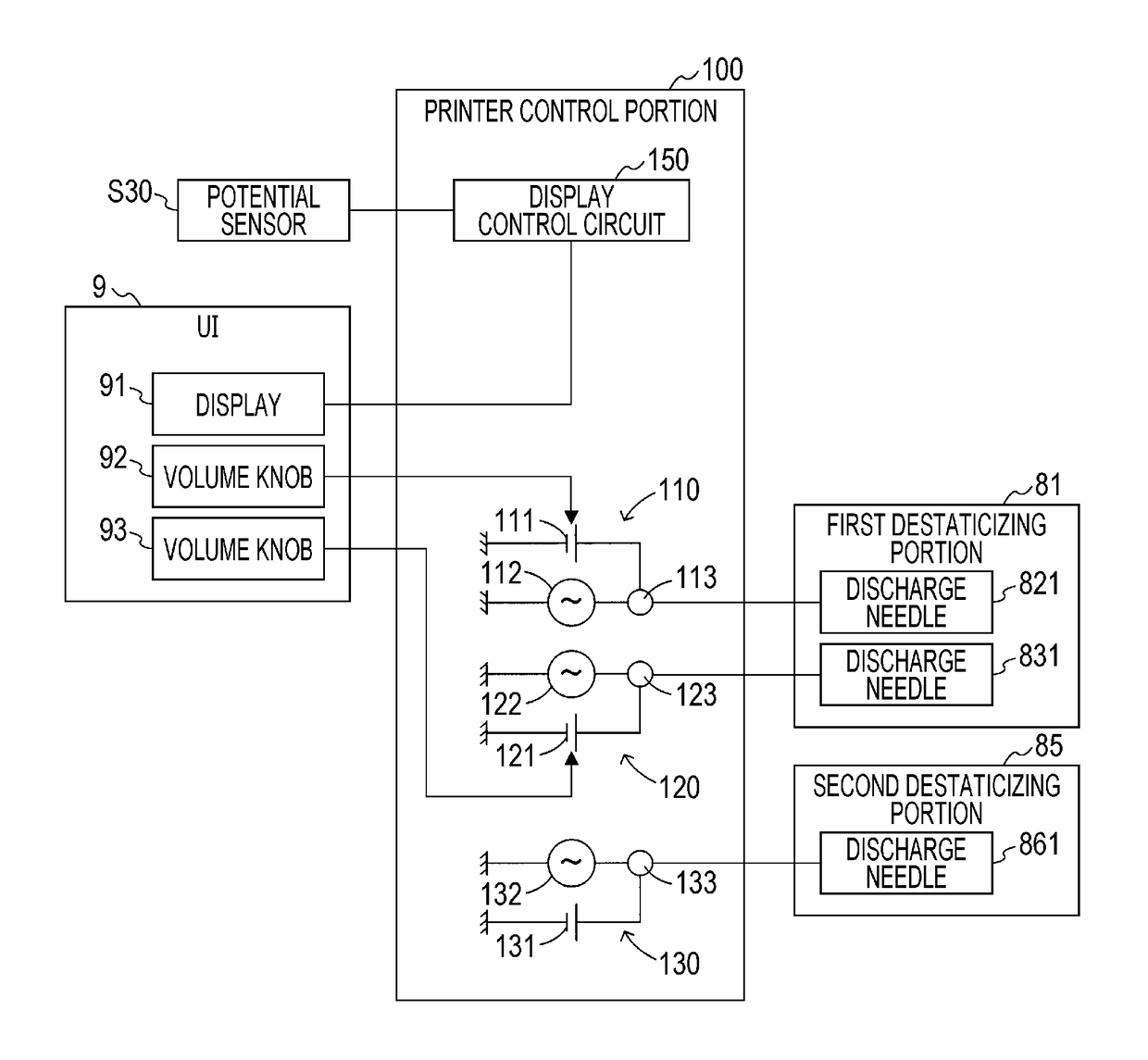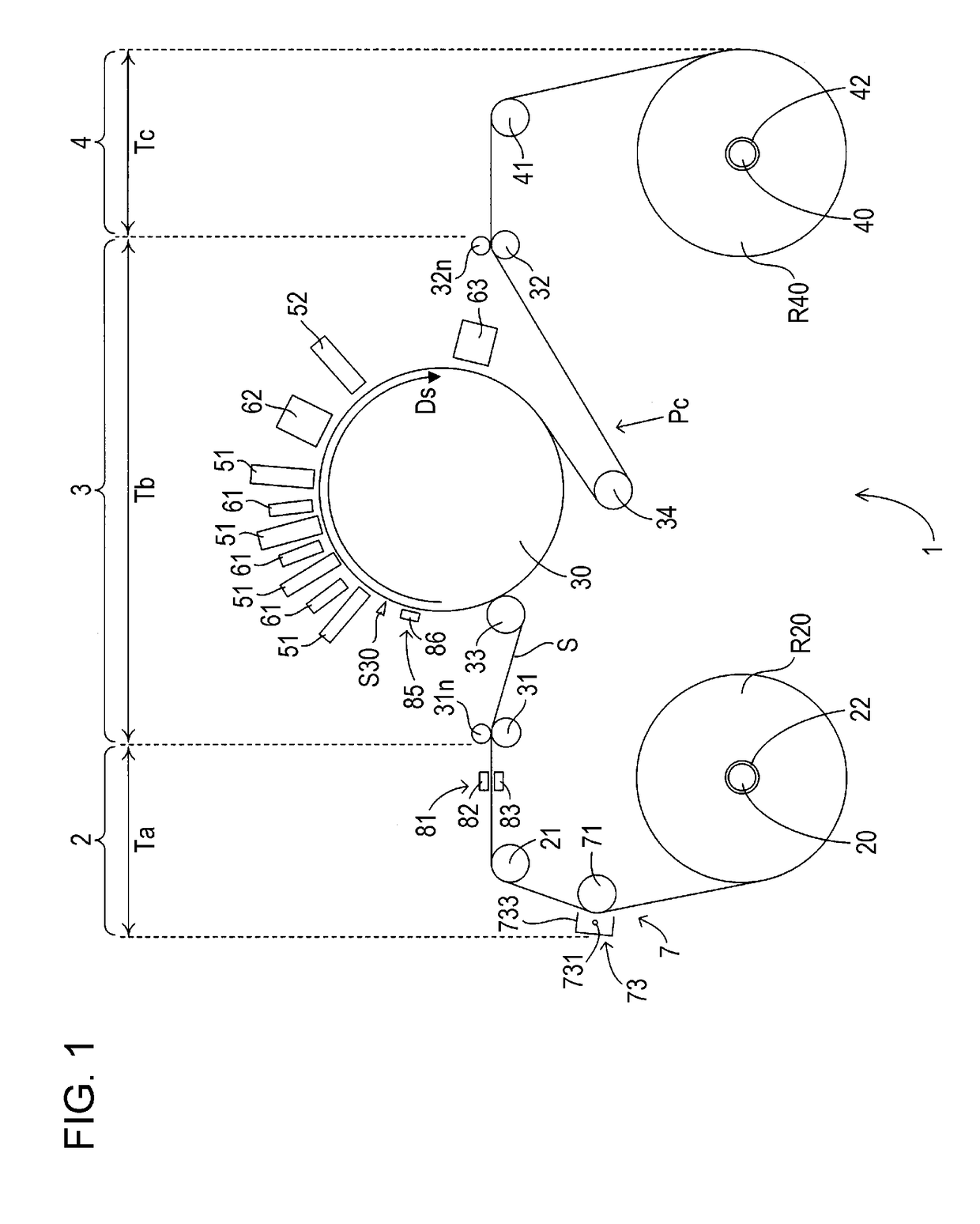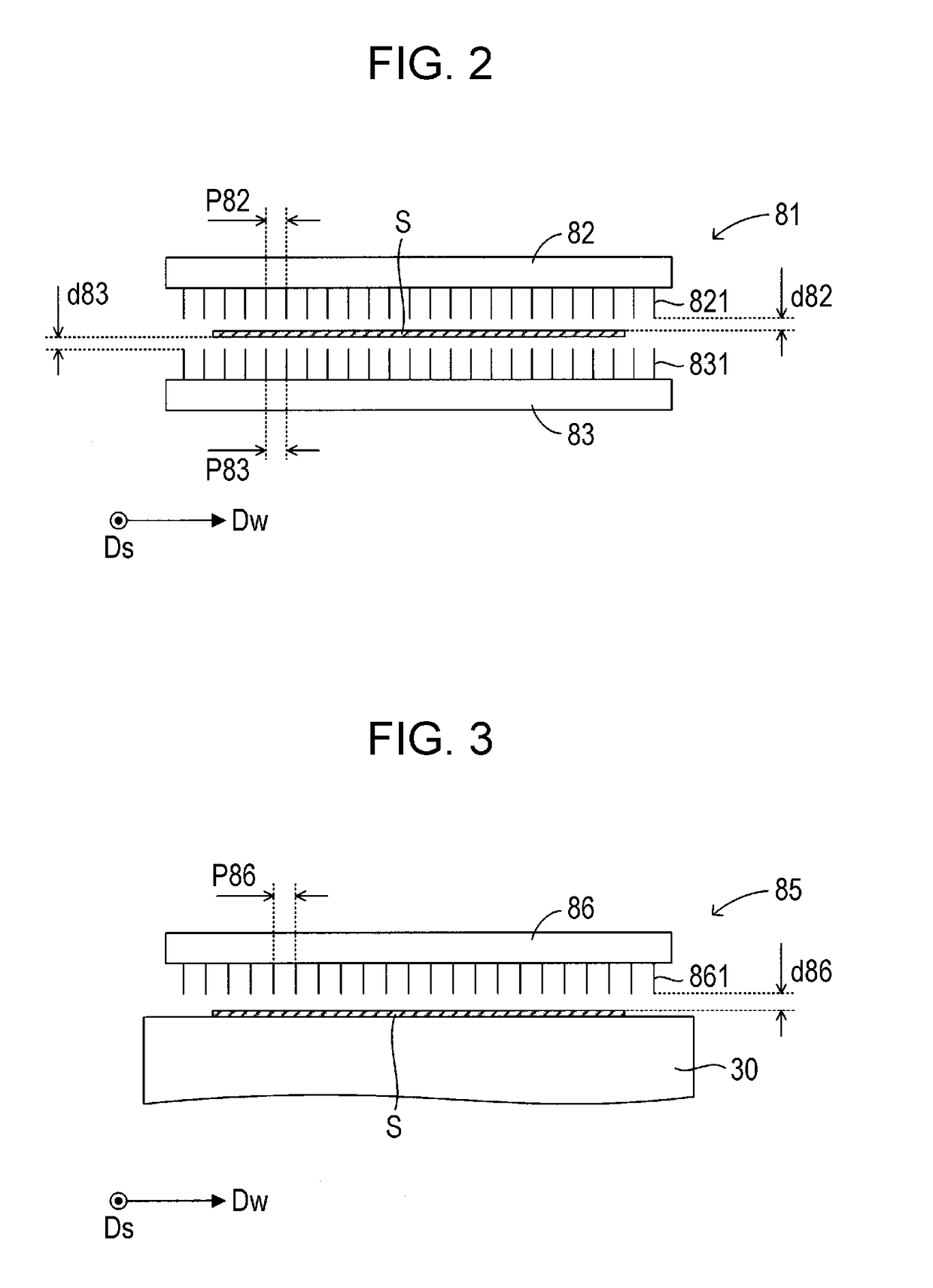Printing apparatus and printing method
a printing apparatus and printing method technology, applied in printing, other printing apparatus, etc., can solve the problems of inability to easily eliminate the adhesion of mist-like liquid to the discharge head, and various problems caused by electrification of recording medium, so as to reduce uneven destaticization of recording medium, suppress adhesion of mist-like liquid, and reduce the effect of nois
- Summary
- Abstract
- Description
- Claims
- Application Information
AI Technical Summary
Benefits of technology
Problems solved by technology
Method used
Image
Examples
Embodiment Construction
[0037]FIG. 1 a front view schematically illustrating an example of an inner configuration of a printer which employs the invention. As illustrated in FIG. 1, in a printer 1, one sheet S (web) of which both ends are wound around a delivery shaft 20 and a winding shaft 40 in a rolled shape stretches between the delivery shaft 20 and the winding shaft 40, and the sheet S is transported to the winding shaft 40 from the delivery shaft 20 along a transport path Pc which stretches in this manner. In other words, each of both ends of the sheet S is wound in a rolled shape, a delivery roll R20 and a winding roll R40 are formed, and the sheet S is transported in a roll-to-roll manner along a transport direction Ds toward the winding roll R40 that is pivotally supported by the winding shaft 40 from the delivery roll R20 which is pivotally supported by the delivery shaft 20.
[0038]In addition, in the printer 1, an image is recorded on the sheet S transported in the transport direction Ds. The ty...
PUM
 Login to View More
Login to View More Abstract
Description
Claims
Application Information
 Login to View More
Login to View More - Generate Ideas
- Intellectual Property
- Life Sciences
- Materials
- Tech Scout
- Unparalleled Data Quality
- Higher Quality Content
- 60% Fewer Hallucinations
Browse by: Latest US Patents, China's latest patents, Technical Efficacy Thesaurus, Application Domain, Technology Topic, Popular Technical Reports.
© 2025 PatSnap. All rights reserved.Legal|Privacy policy|Modern Slavery Act Transparency Statement|Sitemap|About US| Contact US: help@patsnap.com



